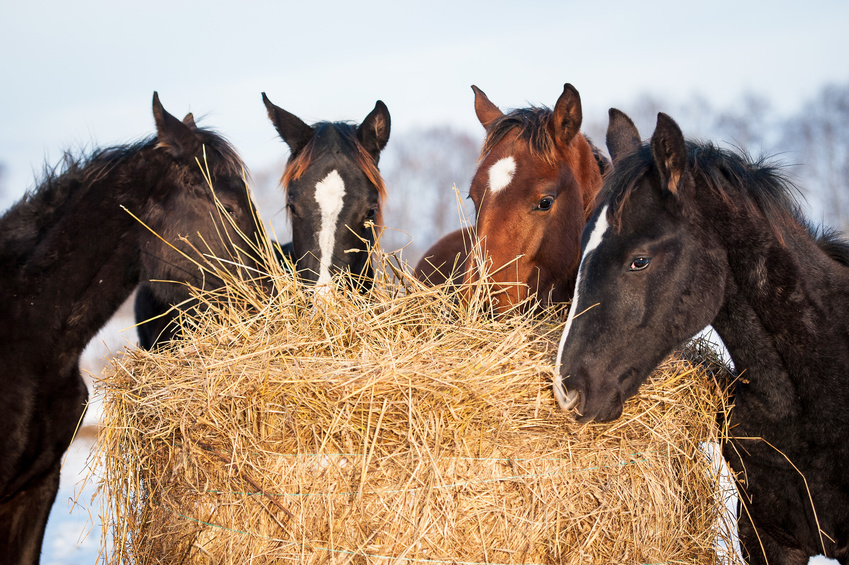Grain Fed on Empty Stomach Increases Acid
By Juliet M. Getty, Ph.D.

I receive a recurring question: which should be fed first—hay or grain? If you’re feeding correctly, this issue is truly a moot point, because the horse should have access to forage in hay and/or pasture 24/7 with no gaps. Therefore, when fed concentrates, the horse’s digestive tract should already have hay flowing through it.
But if you feed starchy cereal grains (oats, wheat, barley, etc.) on an empty stomach, the horse will produce more acid than normal, which can potentially lead to ulcers. Furthermore, grains leave the stomach quickly, increasing the risk that they will not be fully digested in the small intestine (especially if large amounts are fed), and end up in the hindgut where starch can be fermented by the resident bacterial population. This can lead to endotoxin-related laminitis.
A better approach is to have hay present in the stomach first. It creates a physical barrier for the grain, making it leave the stomach less quickly. The fiber in the hay mixes with the starch, and the whole mass enters the small intestine to be digested. Fiber is not digested until it reaches the hind gut, but its presence slows down the digestion of starch (no comma) and obstructs the absorption of glucose into the bloodstream, leading to a less dramatic rise in insulin.

Juliet M. Getty, Ph.D. is an independent equine nutritionist with a wide U.S. and international following. Her research-based approach optimizes equine health by aligning physiology and instincts with correct feeding and nutrition practices. Dr. Getty’s goal is to empower the horseperson with the confidence and knowledge to provide the best nutrition for his or her horse’s needs. Learn more at www.gettyequinenutrition.com.






